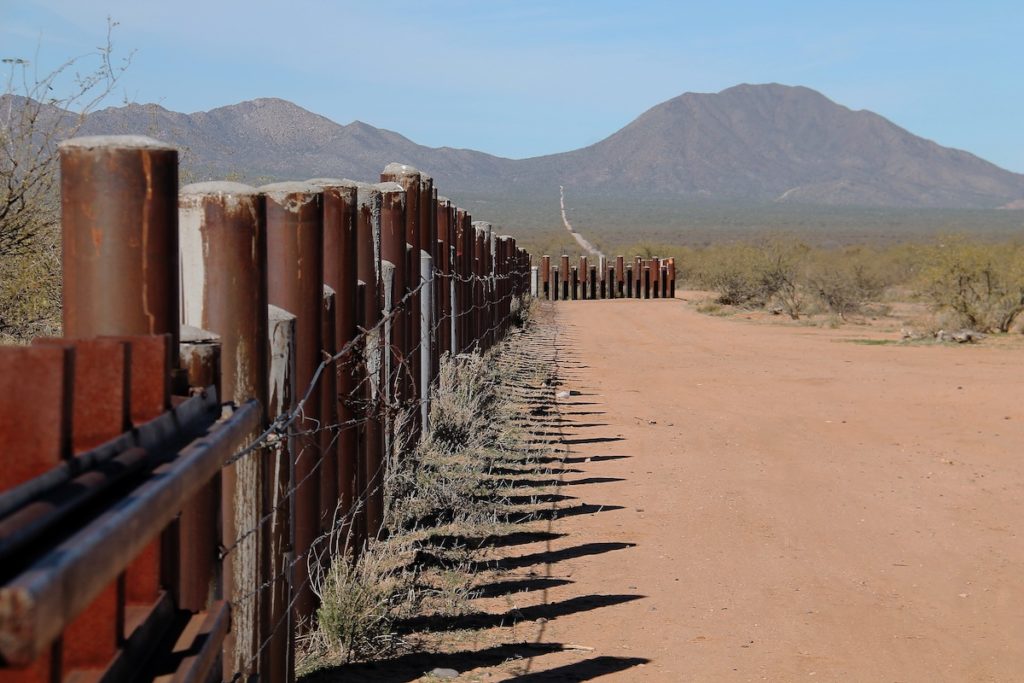Trump’s infamous and racist border wall attracted constant attention from the media and progressive people during his administration. Now that construction has stopped and Trump is out of office, the wall attracts less and less attention. But its impacts are looming concerns yet to be resolved.
The U.S. government has been weaponizing its southern border for hundreds of years. In fact, 227 people died crossing the border in 2020, a result of genocidal U.S. policies. But the current discourse around and construction of a “wall” really started with the Clinton administration. The Trump administration added 450 miles to Clinton’s, Bush’s, and Obama’s wall, totalling 700 miles. This construction cost billions of dollars, drawn from income taxes largely paid by working people. The construction of the wall has disrupted the lives of Indigenous people and caused severe ecological damage.
The racist border and Indigenous resistance
The U.S./Mexico border is in no way natural — in fact, it is a barrier that has split the territory of Indigenous groups between northern Mexico and the southwest United States. The connections and relations between and within these groups long predate the existence of the United States and the establishment of the current border, which has been in place only since the 1850s.
The Tohono O’odham people have lived in the Sonoran Desert, which traverses the U.S./Mexico border, for thousands of years. Like the racist imperialist government that ignored the Tohono O’odham when they placed the border in the middle of their territory, U.S. capitalists continue to disregard their ancestral tribal areas.
Despite the delicate nature of the desert ecosystems in the borderlands, construction companies and U.S. policymakers have forced the Tohono O’odham people to endure constant disruption of their lives and the destruction of their lands. Trump waived dozens of laws that protected areas of cultural importance in order to build his wall.
These waivers, along with racist disregard for Native people and their lands, have allowed the depletion of an extremely important resource in the borderlands — water. One example, a man-made ancestral water source called Quitobaquito Springs, is quickly drying up due in large part to the extraction of water from nearby wells by border wall construction companies. One company admitted to using 45 million gallons of water from nearby wells.
In response, tribal leaders and Native activists created a front of resistance in the community. Peaceful protests, including singing and cultural demonstrations, accompanied nonviolent resistance like climbing onto construction equipment. Police shot protesters with “less-lethal” bullets and tear gas.
Tohono O’odham activists say that “restoration and removal” of the border wall are the first steps to repairing sites like the Quitobaquito springs. The Biden administration has made no steps toward this removal and restoration.

The wall’s effect on the environment
In addition to waiving cultural protections, the Trump administration waived dozens of environmental protection laws in its pursuit of finishing the wall. Several lasting devastating effects of the construction remain in place.
The U.S./Mexico border largely lies within desert ecosystems, which are notoriously delicate and endangered. Sharp cactus spines may appear to indicate hardiness and strength, but deserts are not meant to take a beating and recovery quickly. It can take 10 years for a saguaro cactus to grow one inch tall, and 100 years until it is large enough to grow one arm. Extremely delicate biological soil crusts made up of lichen and microorganisms hold soil in place and allow larger flora to grow. A single footprint can destroy a piece of soil crust that grew over decades.
Border wall construction eroded soil and restricted the natural and practical pathways of water. Despite protests, the wall was built on river beds which caused flooding and the creation of unnatural dams. Construction of access roads necessitated using dynamite which destroyed protected saguaros in the Sonoran Desert.
The unregulated use of ground water for construction threatened nearby wetlands — many which are home to endangered species. In some instances, wildlife had to be relocated.
The wall is restrictive for even the smallest of wild animals to pass through. As a result, these animals became disconnected from their territories, resources, patterns, and escape routes in the case of disasters. The overall effect of the wall on the borderlands ecology has been extreme destruction.
New president, same border
The Biden administration’s policies toward the border contain many concessions to the immigration movement, which has become truly massive in recent years. But his immigration policies are by no means a serious break with the history of extremely racist U.S. government practices in the borderlands. Biden continues to speak of the “right and a duty to secure our borders and protect our people against threats,” the “criminals and cartels seeking to exploit our borders,” and the need for “cross-agency collaboration” to combat “criminal organizations.”
In fact, while Biden does not talk about building a wall, he emphasizes the need to “invest heavily” in replacing and improving border security, especially at established ports of entry. Other high-ranking Democrats have expressed support for a “smart wall” or “cyber wall.”
The fact is, there already is a wall, and the wreckage caused by construction companies that built the wall is strewn across the borderlands. The Biden administration has said very little about what they plan to do, except stop construction. There are few indications of what will happen next.
Of course, Indigenous people like the Tohono O’odham have stated their demands — the new administration should remove the wall and all construction equipment, provide the resources to repair the land, and give reparations to the Indigenous nations of the region. The struggle against racist U.S. policies in the borderlands continues.
Photo credit: Gillfoto, CC BY-SA 4.0





